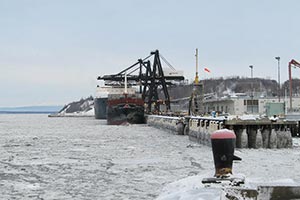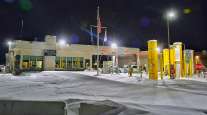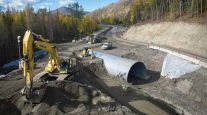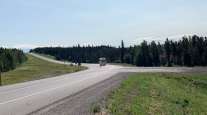After Failed Port Expansion, Anchorage Settles With Contractors for $12.6 Million

Anchorage has settled out of court for $12.6 million with three subcontractors in the city’s failed port expansion project while a lawsuit against other players in the complex drama continues.
Most recently, on Oct. 19, Terracon Consultants Inc. and the Municipality of Anchorage filed a motion in U.S. District Court of Alaska notifying the court that Terracon had agreed to pay the municipality $1.95 million.
Terracon reviewed a 2008 evaluation report of the Open Cell Sheet Pile dock design that the municipality claims was faulty. The settlement document notes that CH2M, which filed a third-party complaint against Terracon in November 2014, has not filed a claim of fault or breach of contract by Terracon.
On Aug. 30, Quality Asphalt Paving agreed to pay the municipality $5.15 million to resolve its role in the lawsuit.
QAP was hired along with project partner MKB Constructors in 2008 by the Port of Anchorage Intermodal Expansion Project manager and former Koniag subsidiary Integrated Concepts and Research Corp. to install the Open Cell Sheet Pile dock support structure at the port.
The Open Cell Sheet Pile is a proprietary design of Anchorage engineering firm PND Engineers, which also is a defendant in the municipality’s suit filed in early 2013.
PND contends the dock design failed due to faulty installation by QAP and MKB, while the contractors and the city argue the design wasn’t suitable for the Anchorage port from the outset.
Judge Sharon Gleason dismissed QAP from the suit Oct. 17. Similarly, MKB settled with Anchorage for $5.5 million in June.
All three settlements release the subcontractors from liability to the municipality, but not fault in the lawsuit trial, set for April.
ICRC and PND did not oppose QAP’s dismissal from the suit based on that understanding.
PND filed a third-party complaint bringing MKB and QAP into the legal tangle in April 2015.
CH2M, an international engineering firm which has dropped “Hill” from its name, is an original defendant in the lawsuit along with ICRC and PND through its purchase of Veco, a consulting firm that also evaluated the port design.
In January 2014, the municipality hired CH2M to manage the ongoing and smaller-scale $480 million Anchorage Port Modernization Project, which eventually will lead to the installation of a more traditional pile-supported dock structure, similar to what is in place.
The $12.6 million in settlement funds will be split, with $7.6 million going toward the modernization project costs and $5 million being reserved for future port litigation expenses, according to Anchorage Port Director Steve Ribuffo.
To date, the municipality has spent $25.4 million on the second port project from the $126.7 million left over from the nearly $439 million in local, state and federal funds raised for the expansion project.
CH2M also issued the study in February 2013 that determined the Open Cell Sheet Pile was unsuitable for use at the Port of Anchorage.
PND has repeatedly rebutted that study.
In January, Gleason ruled that MKB and QAP were subject to the lawsuit despite a 2012 settlement in which ICRC agreed to pay the U.S. Maritime Administration, or MARAD, $11.1 million to resolve a $17 million contract dispute.
Because ICRC hired MKB and QAP, the subcontractors unsuccessfully claimed they were released from liability through ICRC’s settlement with MARAD.
The municipality, however, was unaware of the 2012 deal at the time it was made, according to an October 2012 letter from then-Anchorage Mayor Dan Sullivan to MARAD Administrator David Matsuda in which Sullivan wrote he was “surprised and disappointed” to learn of the $11.1 million agreement.
MARAD, a federal Transportation agency, was brought into the project in 2003 by the municipality to manage construction and be a vessel to acquire federal funding.
Anchorage also sued MARAD in early 2014 in Federal Claims Court. Municipal attorneys have said the city is hoping to recoup up to $340 million from the two lawsuits.
Originally intended to update and expand the Port of Anchorage’s aging docks, the expansion project was fraught with control and communication issues nearly from its outset.
Those issues were manifested in construction problems and led to work being stopped partway through in 2010. It never resumed.




